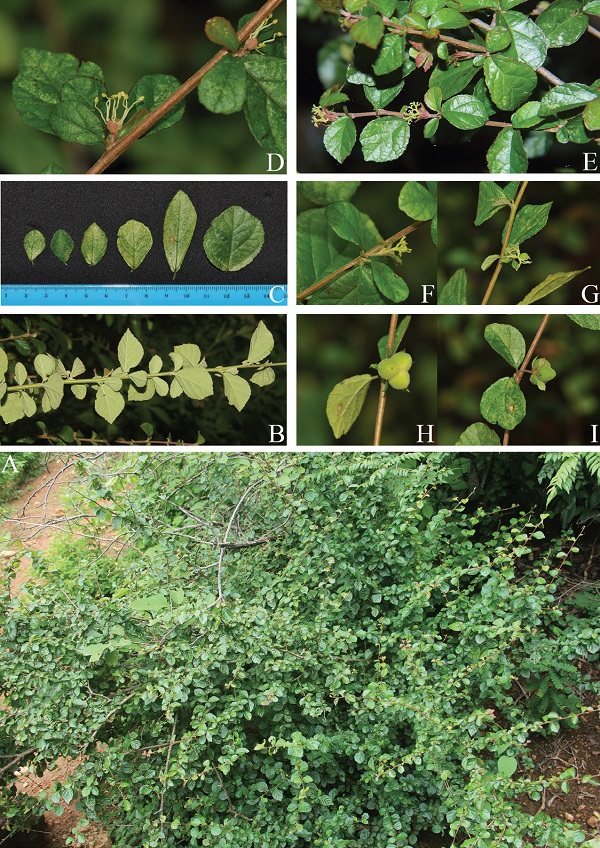Euphorbiaceae is one of the largest families of angiosperms, with 218 genera and 6462 species currently recognized. During their recent floristic explorations of the Yuanjiang valley, researchers from Xishuangbanna Tropical Botanical Garden (XTBG) and Kunming Institute of Botany (KIB) collected an unusual species.
The plant was easily identified as a member of Euphorbiaceae based on the three-lobed capsule and unisexual flowers. After carrying out molecular phylogenetic study and molecular divergence dating analysis, the researchers confirmed it as a new species and named it as Tsaiodendron dioicum.
The molecular, morphological and palynological results all support the new genus as a member of the Epiprineae.
Tsaiodendron possesses some characteristics that are unusual for the tribe: it is a drought deciduous shrub, with a strictly dioecious sexual system, only one staminate or pistillate flower developed in a reduced inflorescence that is terminal on a short shoot and disc segments present in the pistillate flower.
The new genus is monotypic. It is endemic to China, and only found in Yuanjiang dry-hot valley, Yunnan.
Only one population and about 500 individuals of Tsaiodendron dioicum were found in Yuanjiang dry-hot valley. It is threatened due to increasing habitat loss and human activities.
The genus is named in honor of the late Prof. Cai Xitao (Tsai Hse-Tao, 1911–1981), founder of XTBG, and who devoted all his life to the study of Chinese plants.
The study entitled “Molecular phylogenetic analyses of Euphorbiaceae tribe Epiprineae, with the description of a new genus, Tsaiodendron gen. nov., from south-western China” has been published online in Botanical Journal of the Linnean Society.
Contact
TAN Yunhong Principal Investigator
Center for Integrative Conservation, Xishuangbanna Tropical Botanical Garden, Chinese Academy of Sciences, Menglun, Mengla, Yunnan 666303, China
E-mail: tyh@xtbg.org.cn

Tsaiodendron dioicum Y.H.Tan, Z.Zhou & B.J.Gu gen. nov., sp. nov. (A) habit; (B) twig, showing lower surface
of leaves; (C) leaf blade; (D) male flower; (E–G) female flower; (H–I) fruit.
(Images by Yun-Hong Tan and Bo-Jian Gu)

